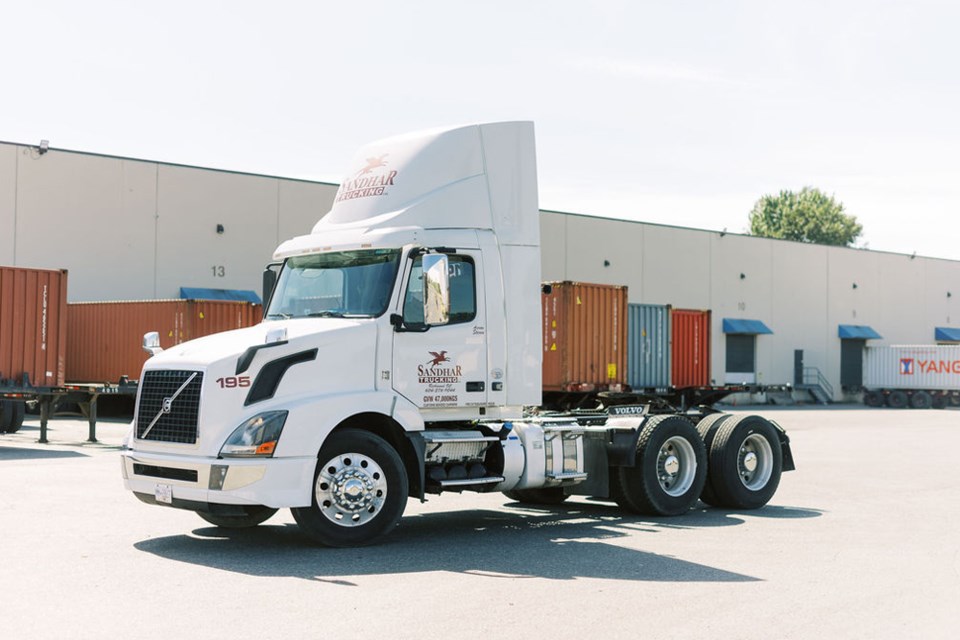Spiralling inflation and industry regulations are making the road ahead bumpy for businesses in British Columbia. Richmond-based Sandhar Trucking Ltd. has to find ways to increase its internal efficiencies to mitigate rising prices of fuel and new industry regulations.
It’s a collection of financial headwinds that has Sandhar Trucking trying hard, as a vital link in the supply chain of goods, to find ways to limit the impact on its clients.
But it is a challenging task when a main component of their service is fuel, which has seen dramatic rises in price.
“Last year, fuel surcharge was four per cent,” says Aaron Sandhar, manager of Sandhar Trucking Ltd. “In July of this year, it was 56 per cent. And that’s a government regulation that is announced at the beginning of each month.”
Needless to say, that makes transporting goods much more expensive.
“For example, the cost of a container delivery in Greater Vancouver has almost doubled in the past year and a half,” Sandhar says. It’s getting to the point where businesses have no option but to increase their own prices, which are getting passed down to the end consumer.
“It all trickles down to places like the grocery store when we buy food or other goods for our families,” Sandhar says. “I know there are a lot of reasons for inflation, but this is a major contributing factor.”
To help reduce the financial impact on their clients, Sandhar Trucking has been trying to find and implement greater efficiencies in-house.
But another hefty cost increase beyond their control is looming on the horizon.
Called the Rolling Truck Age program from the Port of Vancouver, it mandates that all transportation operators serving the port must have, starting this September, vehicles no older than 10 years, in an effort to curb air pollution.
“That means that we will continuously have to update vehicles in our fleet,” Sandhar says. “And it’s not just us. There are hundreds of other trucks that will be removed from the port in the upcoming years.”
While that means a big investment - the average truck costs about $250,000 - being able to source one, given the supply chain slow down, will also be a challenge. Many dealerships do not have inventory, therefore trucking companies will need to find creative ways to update their fleet so they can continue to meet increasing demand.
Despite these challenges, Sandhar Trucking is investing heavily in new technology so they can better serve their customers and offset external issues.
For more about Sandhar Trucking Ltd. and its services, visit their website at sandhartrucking.com.



